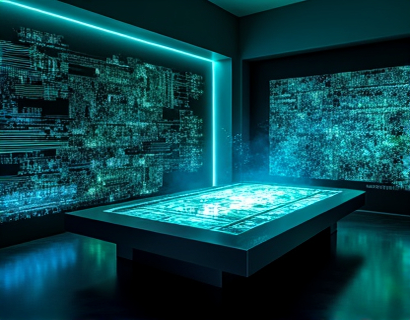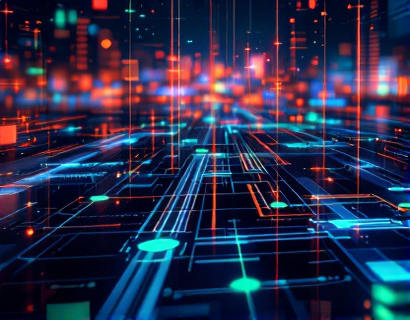AI-Driven Exploration of Egyptian Heritage: Insights and Authentic Artifact Shopping Experience
The ancient civilization of Egypt, with its profound history and cultural richness, continues to captivate the imagination of people around the world. Through the integration of advanced AI technologies, we can now delve deeper into the mysteries of this ancient land, offering unprecedented insights and an authentic shopping experience for artifacts that truly reflect Egypt's timeless legacy. This comprehensive guide aims to provide history enthusiasts and cultural explorers with a thorough understanding of Egypt's heritage, while also presenting a curated selection of authentic artifacts.
Unveiling Egypt's Rich Tapestry with AI
The application of AI in studying and preserving Egyptian heritage has opened new avenues for research and education. AI-driven tools can analyze vast amounts of data from archaeological findings, historical texts, and artifacts, providing insights that were previously inaccessible. These technologies help in dating artifacts, understanding the context of their creation, and even reconstructing lost knowledge. For instance, machine learning algorithms can examine the styles and techniques used in ancient Egyptian pottery, helping to authenticate pieces and trace their origins.
One of the most significant contributions of AI in this field is the ability to create interactive and immersive experiences. Virtual reality (VR) and augmented reality (AR) applications, powered by AI, allow users to explore ancient Egyptian sites and artifacts in a highly engaging manner. These technologies can simulate the grandeur of the pyramids, the intricate details of hieroglyphics, and the daily life of ancient Egyptians, making history come alive for a modern audience.
Deep Dive into Egyptian Culture and History
To truly appreciate the artifacts and the culture they represent, it is essential to understand the broader context of ancient Egypt. This civilization, which thrived along the Nile River, is known for its monumental architecture, sophisticated writing system, and profound religious beliefs. The Egyptians left behind a wealth of artifacts that serve as tangible links to their past, including statues, jewelry, tools, and texts.
One of the most iconic aspects of Egyptian culture is its writing system, hieroglyphics. These symbols were not just a means of communication but also held deep religious and magical significance. AI can help decode and interpret these complex symbols, providing insights into the language and thoughts of the ancient Egyptians. For example, AI algorithms can analyze the frequency and context of certain hieroglyphs to understand their usage and evolution over time.
The religious beliefs of the Egyptians were central to their society, influencing every aspect of their lives. The pantheon of gods and goddesses, each with their own roles and attributes, was intricately woven into the fabric of daily life. AI can assist in mapping the complex relationships between these deities and their associated symbols, temples, and rituals. This helps in understanding the spiritual world of the ancient Egyptians and the significance of various artifacts found in religious contexts.
Authentic Artifact Shopping Experience
For those who wish to own a piece of Egypt's rich history, an authentic artifact shopping experience is invaluable. The challenge lies in ensuring that the artifacts available for purchase are genuine and ethically sourced. This is where AI plays a crucial role in verifying the authenticity and provenance of artifacts.
AI-powered systems can analyze detailed descriptions, images, and even physical attributes of artifacts to cross-reference them with known examples and databases. This helps in identifying forgeries and ensuring that only authentic pieces reach the market. Additionally, AI can trace the provenance of an artifact, providing a transparent and verifiable history from its discovery to the present day.
The shopping experience is further enhanced by detailed descriptions and high-quality images that highlight the unique features of each artifact. AI-generated content can provide background information on the artifact's historical context, significance, and the craftsmanship involved in its creation. This not only enriches the buyer's understanding but also adds value to the purchasing experience.
Curated Collection of Authentic Artifacts
The collection features a diverse range of artifacts that span different periods of Egyptian history, from the Predynastic era to the Roman period. Each piece is carefully selected for its historical importance, aesthetic appeal, and authenticity.
One notable item is a finely crafted golden amulet depicting the goddess Isis. This amulet, dating back to the New Kingdom period, showcases the exceptional skill of ancient Egyptian goldsmiths. The use of AI in analyzing similar artifacts helps verify its authenticity and provides insights into its possible religious and symbolic significance.
Another piece is a set of ceramic vessels from the Middle Kingdom, known for their intricate designs and functional beauty. These vessels were likely used in daily rituals and offer a glimpse into the domestic life of ancient Egyptians. AI analysis of comparable pieces helps in dating and understanding the cultural context of these artifacts.
For those interested in personal adornment, a collection of beaded jewelry from the Ptolemaic period is available. These pieces, featuring a mix of local and foreign influences, reflect the cosmopolitan nature of Alexandria during this era. AI-driven insights help in authenticating these jewelry pieces and explaining their cultural significance.
Enhancing the Shopping Experience with AI
Beyond mere authentication, AI enhances the shopping experience by providing personalized recommendations based on the buyer's interests and preferences. By analyzing past purchases and browsing behavior, AI can suggest artifacts that align with the user's tastes, ensuring a more tailored and satisfying experience.
Interactive features, such as 3D models and virtual try-on, allow buyers to explore artifacts in detail. Users can rotate items, zoom in on intricate details, and even see how the artifacts would look in their own environment. This level of interactivity not only educates but also engages the buyer, making the shopping experience both informative and enjoyable.
AI chatbots and virtual assistants are available to answer questions, provide additional information, and assist with the purchasing process. These AI-driven tools can handle a wide range of inquiries, from the historical significance of an artifact to the shipping and handling procedures, ensuring a seamless and supportive experience.
Supporting Cultural Preservation
The integration of AI in the artifact shopping experience goes beyond individual transactions; it also supports broader cultural preservation efforts. A portion of the proceeds from artifact sales is often directed towards archaeological projects and the preservation of historical sites. AI can help track and manage these contributions, ensuring that funds are used effectively and transparently.
Moreover, AI can aid in the documentation and digitization of artifacts, creating virtual archives that are accessible to researchers and the public alike. This not only helps in preserving the physical artifacts but also in disseminating knowledge about Egyptian heritage to a global audience.
Conclusion: Bridging the Past and Present
The combination of AI technology and a passion for Egyptian heritage creates a unique and enriching experience for those interested in exploring this ancient civilization. By providing deep insights and authentic artifacts, this platform bridges the gap between the past and the present, allowing users to connect with Egypt's timeless legacy in a meaningful way. Whether you are a history enthusiast, a collector, or simply someone curious about the wonders of ancient Egypt, this AI-driven approach offers a comprehensive and engaging experience.











































